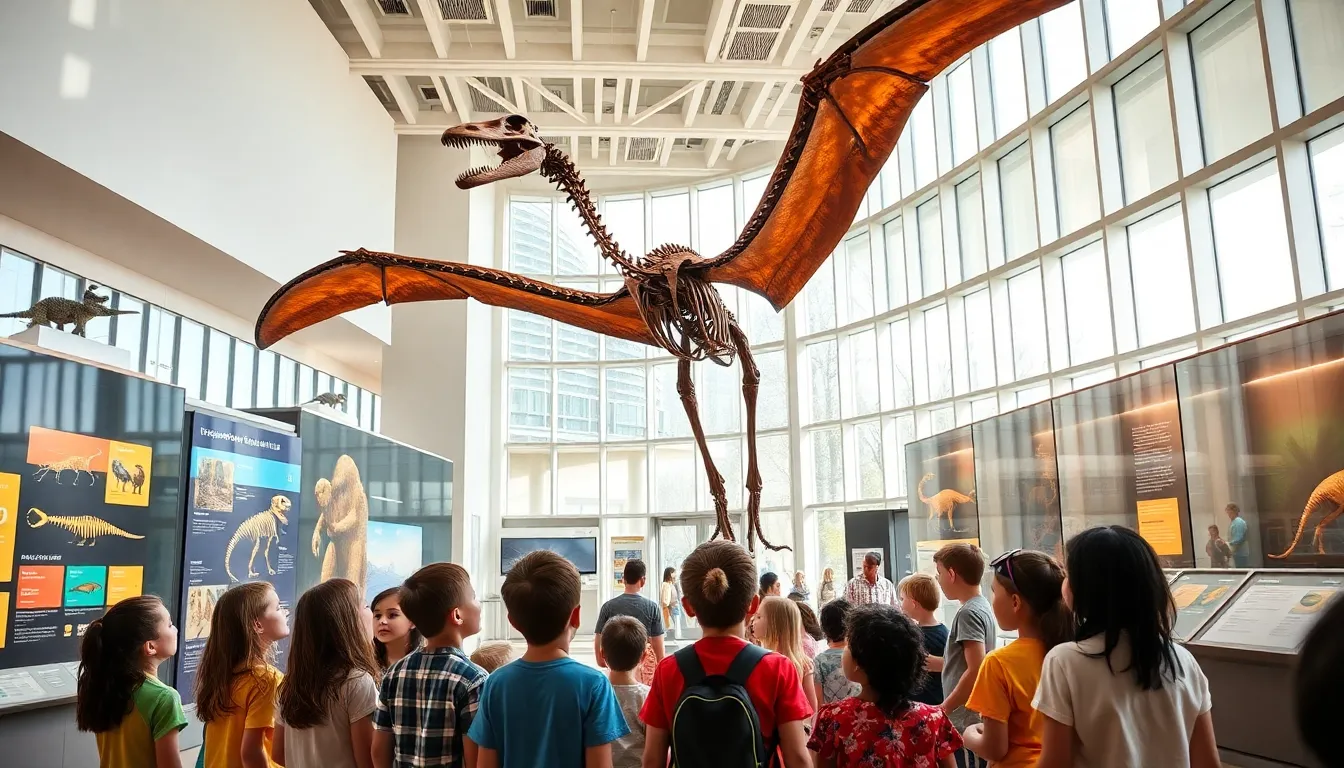Imagine stepping into a world that tells the exhilarating story of life on Earth, all without wearing a lab coat. Welcome to the fascinating realm of evolution life science museums. These institutions don’t just house dusty old bones: they’re dynamic centers of learning where ancient history collides with cutting-edge technology. Curious to know how these museums craft a narrative of life’s evolution? Let’s immerse before you discover that fun facts aren’t just for trivia night.
Table of Contents
ToggleThe Importance of Evolution in Life Science Museums

Showcasing the History of Life on Earth
Evolution life science museums serve as the grand storytellers of our planet’s history. From the dawn of single-celled organisms to the age of dinosaurs, these museums capture the intricate tale of how life has flourished over billions of years. Through carefully curated exhibits, they bring to life the fascinating journey of adaptation, extinction, and resilience. Visitors often leave with a newfound appreciation for the complexity of nature, realizing that the colossal T-Rex next to the humble housefly shares a common ancestral thread.
Educational Impact on Visitors
Education remains at the heart of these museums. Each exhibit is an opportunity for learning that transforms passive observers into active participants in the story of evolution. Schools frequently organize field trips, allowing students to engage with science in an immersive atmosphere. Imagine a class of fifth graders, wide-eyed as they stand before a towering pterosaur skeleton. Eventual hands-on workshops enable these students to explore evolutionary concepts, sparking curiosity that stretches far beyond the museum walls.
Evolutionary Theories and Their Representation
Museums play a crucial role in unpacking various evolutionary theories. Whether delving into Darwin’s natural selection or modern genetic studies, they provide balanced representations that encourage critical thinking. By showcasing different perspectives on evolution, these institutions ensure that visitors can understand not just the how, but also the why behind biodiversity on our planet.
Innovative Exhibit Designs
Interactive Learning Experiences
Who said learning couldn’t be fun? Evolution life science museums are reimagining what exhibits look like by integrating interactive elements. Touch screens, augmented reality, and life-size replicas allow visitors to experience the thrill of discovery firsthand. Imagine manipulating a virtual tree of life where your choices can lead to branching paths in evolutionary history. These innovative designs captivate audiences, making learning feel less like a lecture and more like an adventure.
Utilizing Technology in Exhibits
Technology doesn’t just enhance the visitor experience. It also engages younger audiences who thrive in a digital world. By incorporating 3D simulations and virtual reality, these museums create memorable journeys through time and space. Rather than reading about an Ice Age habitat, guests can walk through a digitally recreated environment filled with creatures of the past. Such ingenious uses of technology bridge the gap between ancient life and modern understanding.
Environmental Awareness Initiatives
Conservation and Biodiversity Education
Evolution life science museums are also at the forefront of promoting environmental awareness. With the alarming rate of species extinction, these institutions take on the vital role of educating the public about conservation and biodiversity. Interactive displays offer insights into ecosystems, while documentary screenings highlight the work being done to protect endangered species. By fostering a sense of responsibility, these museums encourage visitors to become active participants in preserving the planet.
Programming for Future Generations
Future generations are our best hope for a sustainable planet. That’s why many evolution life science museums carry out programming specifically aimed at kids. Workshops like “Little Scientists” and summer camps teach children about ecology and evolution in fun, engaging ways. By instilling a connection to nature early on, these programs inspire young minds to care about the environment long into adulthood.
The Role of Museums in Scientific Communication
Connecting Science with the Public
The evolution life science museum’s mission extends beyond information dissemination: it aims to connect scientific knowledge with the public. Faced with increasingly complex scientific ideas, these institutions serve as bridges that simplify and explain the wonders of evolution and ecology. As visitors wander through the exhibits, they decode science in a relatable manner, often leading to meaningful discussions that extend beyond museum walls.
Fostering Critical Thinking Skills
In a world where misinformation can spread like wildfire, fostering critical thinking is more important than ever. Evolution life science museums encourage visitors to question, explore, and engage thoughtfully with content. Interactive questions posed throughout exhibits prompt deep reflection and discussions that cultivate analytical skills. It’s not just about collecting facts: it’s about learning how to think, synthesize information, and engage with scientific discourse.



